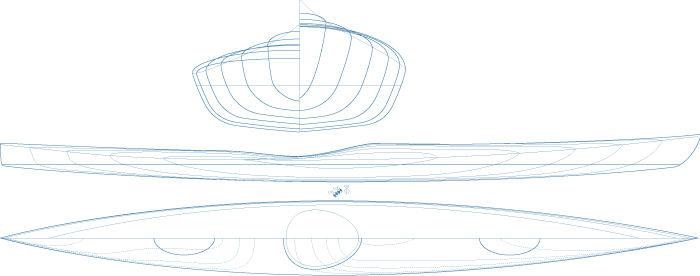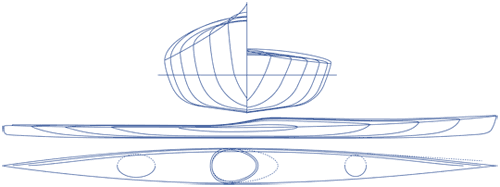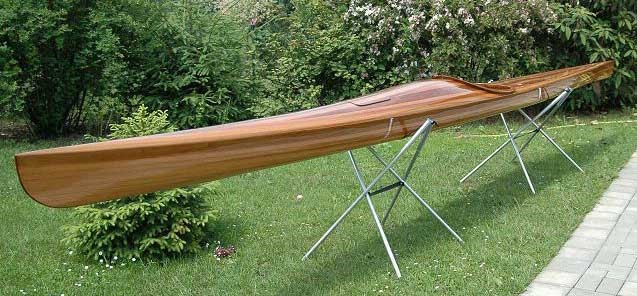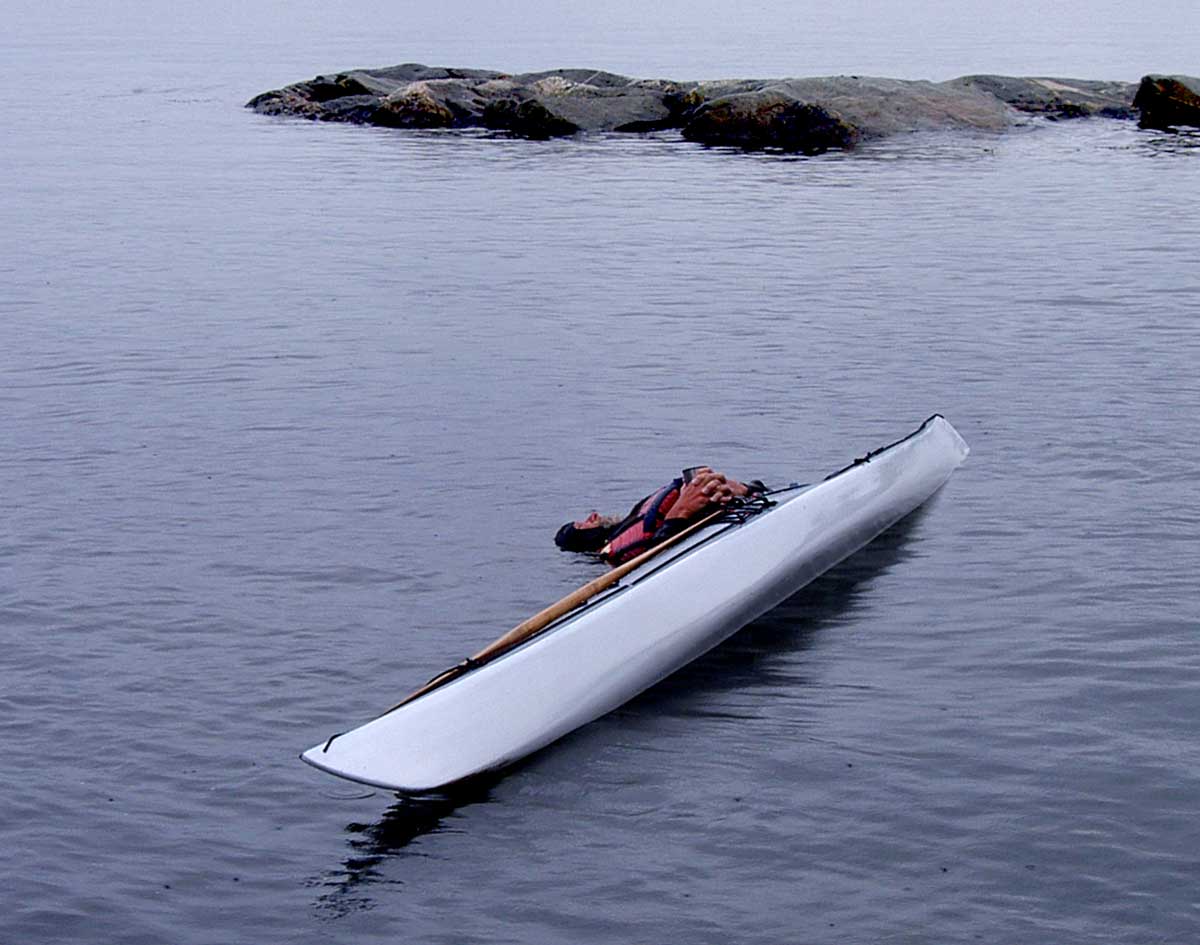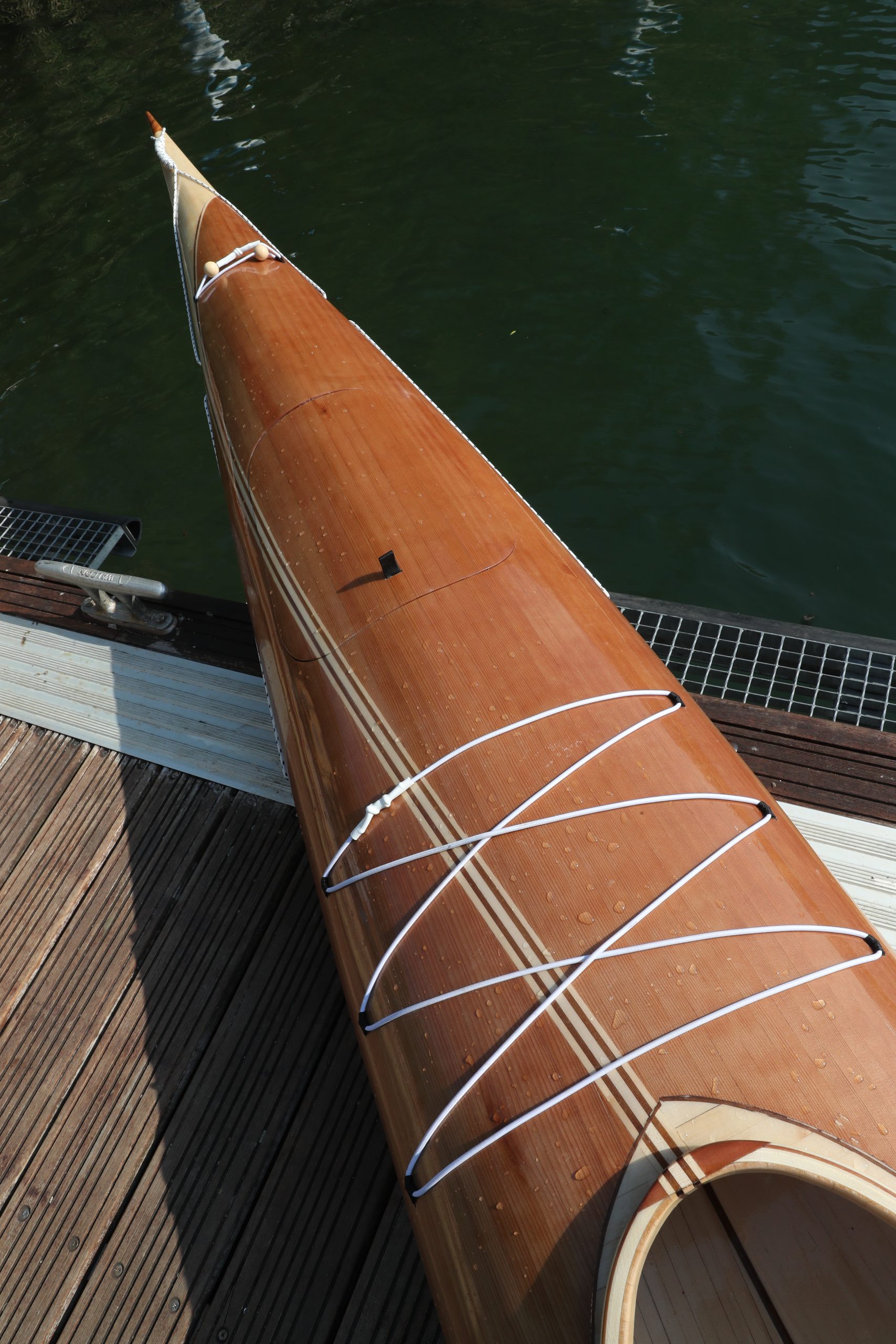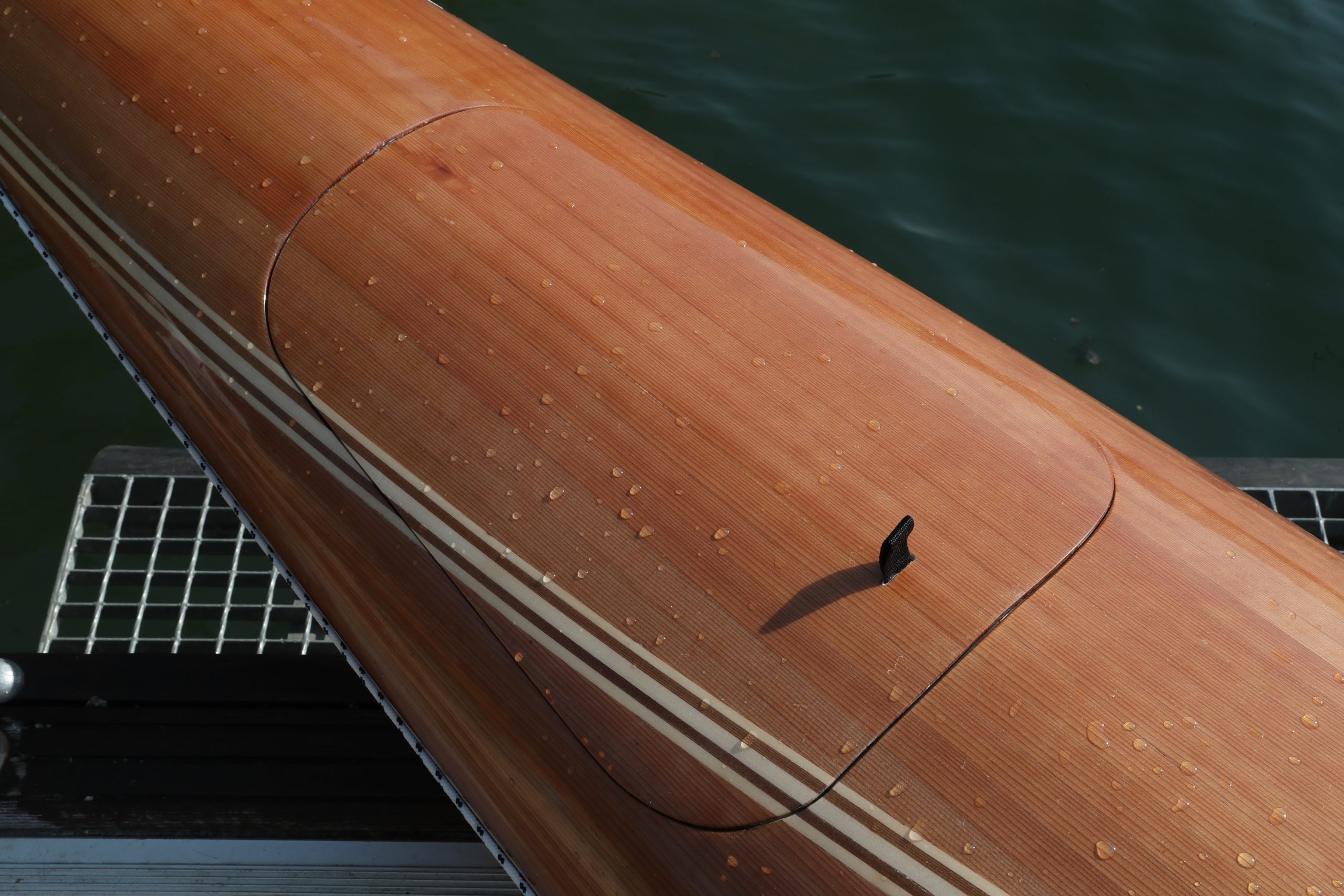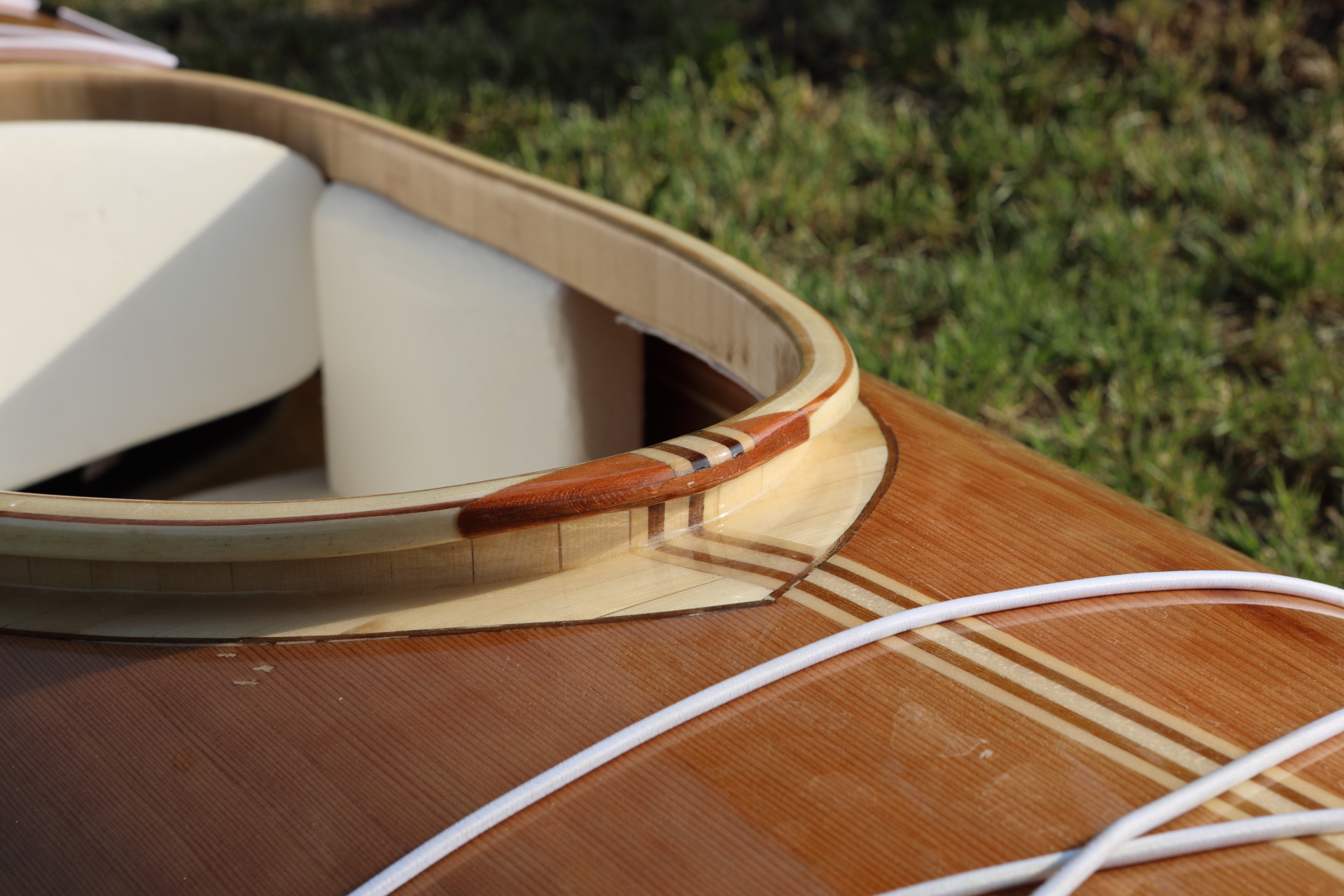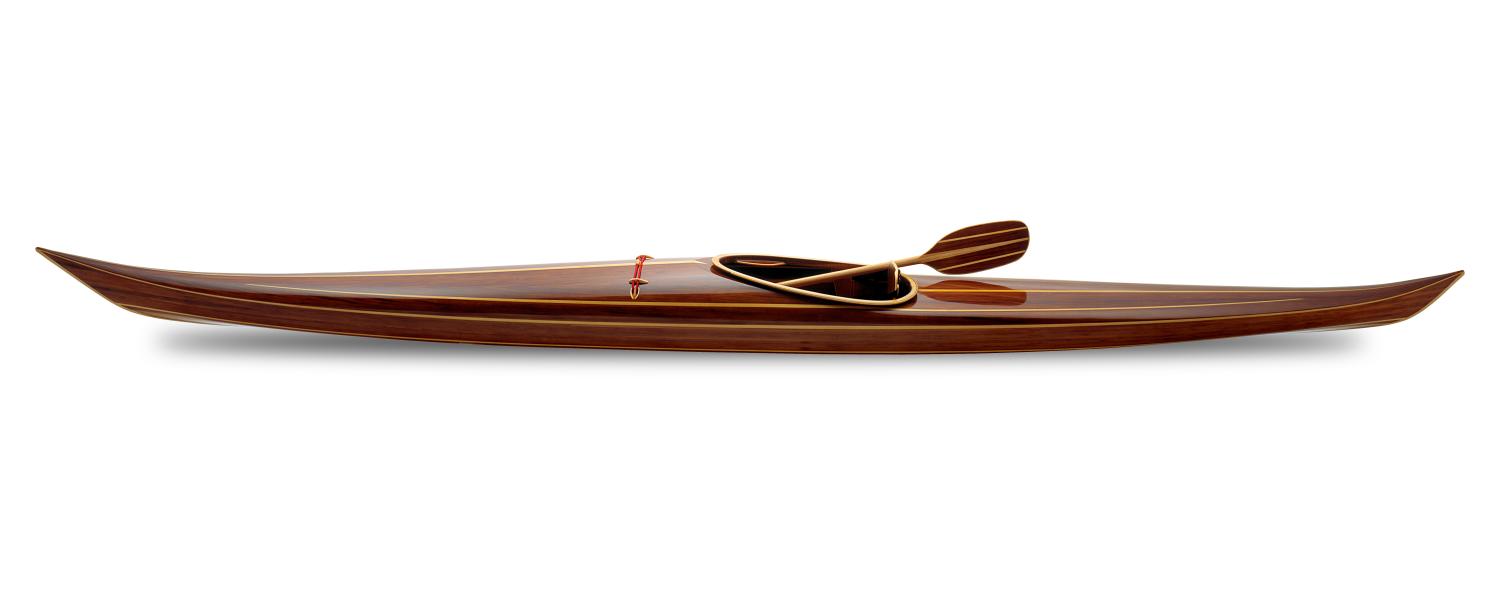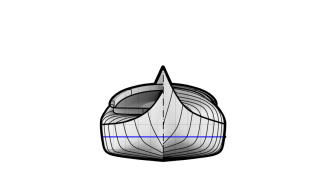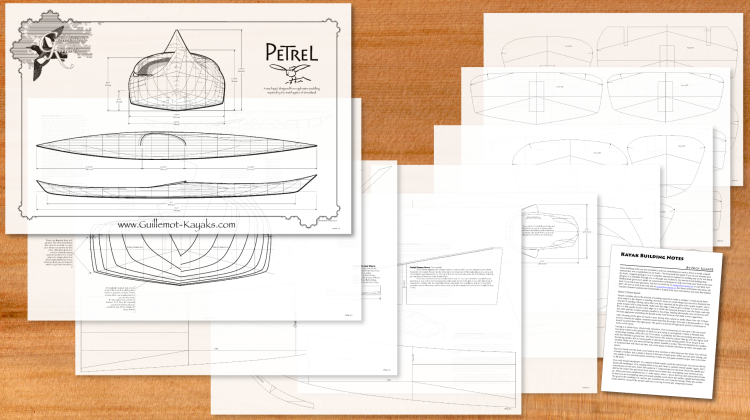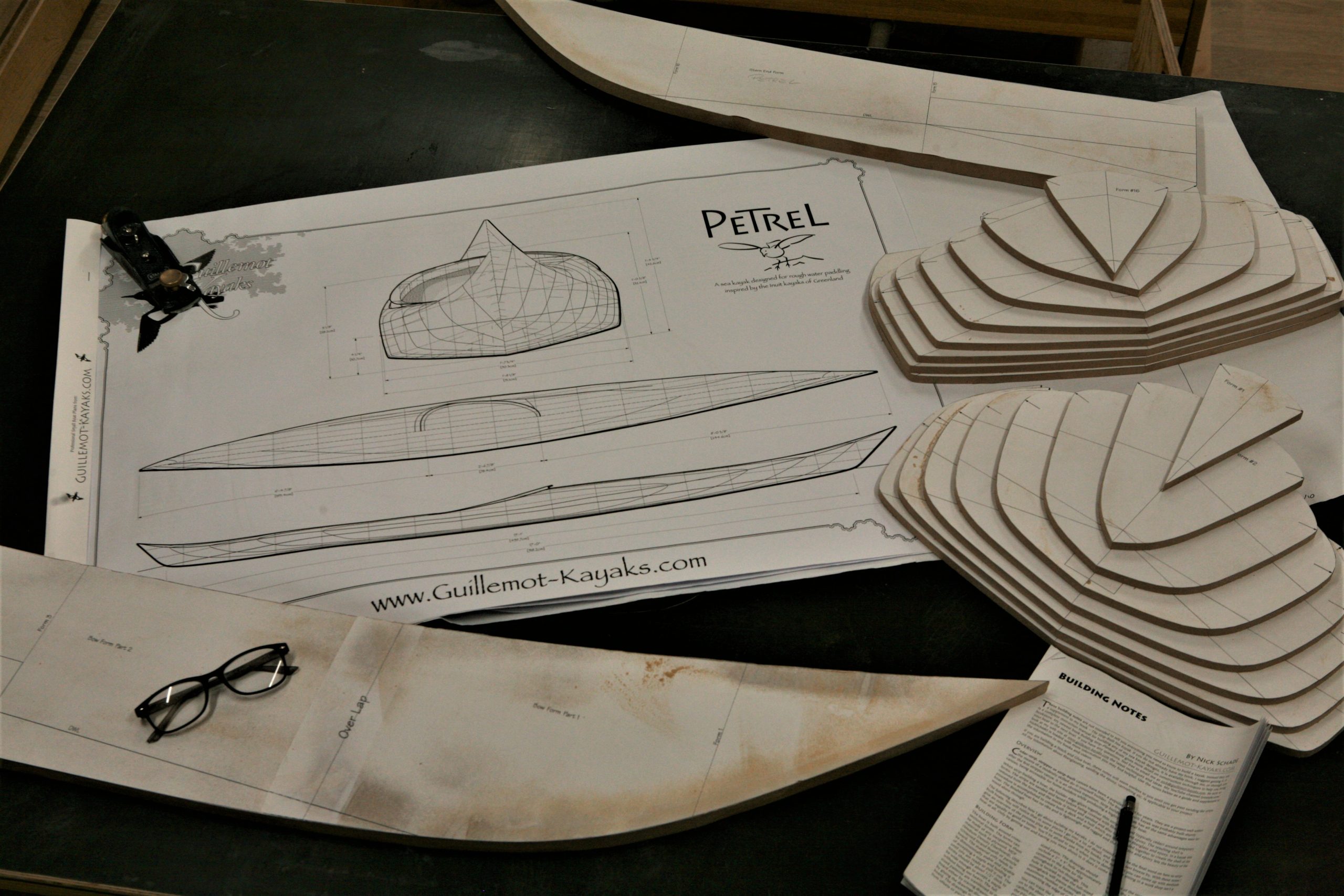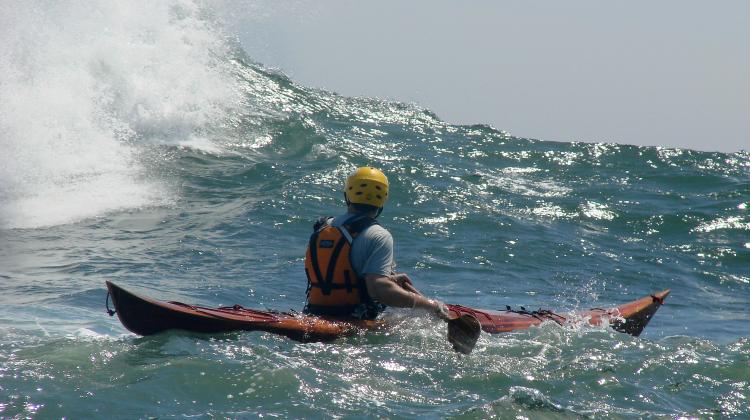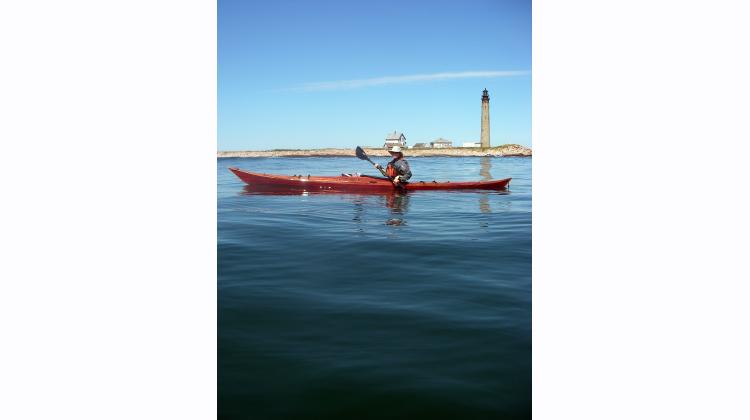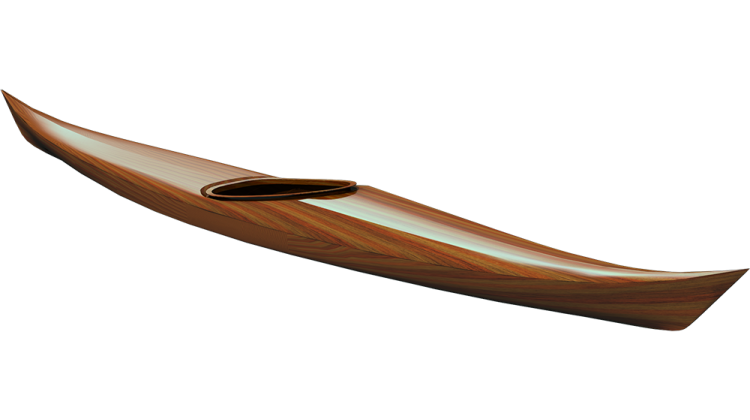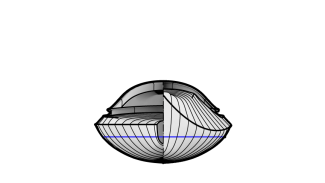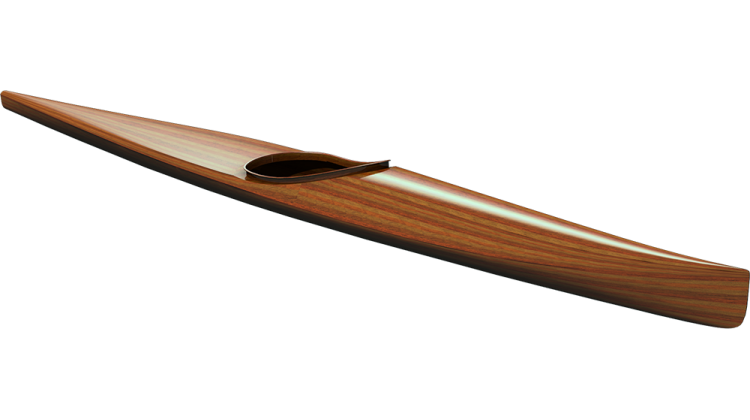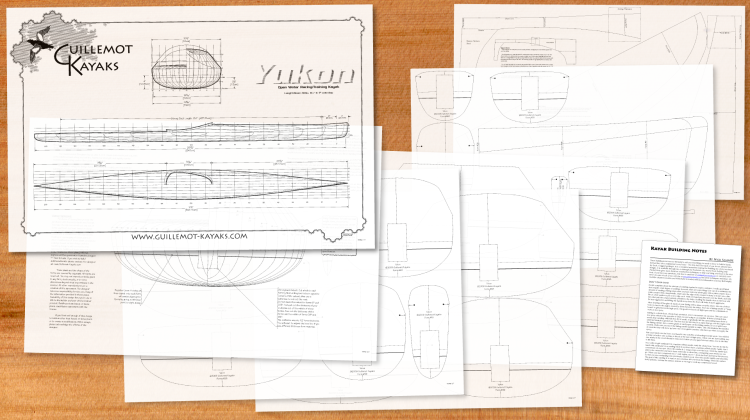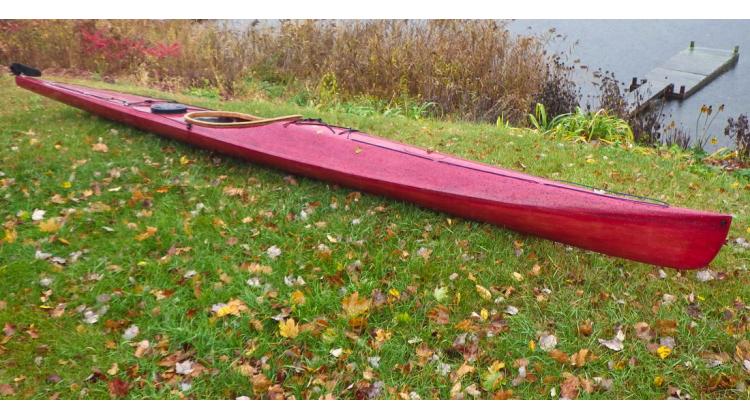Trova il tuo Kayak
Di seguito alcuni esempi dei kayak più conosciuti e apprezzati presenti sul mercato. Scegli quello che più si adatta alle tue esigenze. Ognuno di questi può essere modificato per adattarsi alle misure e alle necessità di chiunque.
Nelle pagine dei link che ho messo, poi, troverai decine di altri progetti di kayak diversi che ti potrebbero piacere di più. Parliamone.
Riguardo ai costi, mediamente un kayak costruito con un solo tipo di legno, con un gavone stagno anteriore, completo di sedile e cime di coperta, può partire dai 3800 euro + tasse e spese di spedizione.
Le modifiche al disegno originale e la scelta dei legni possono influire sui costi finali.
Chiamami senza impegno per un preventivo personalizzato.
Frej
designer: Bjorn Thomasson
Key features are:
- Easily handled – minimal resistance in touring pace and turning almost like a white-water kayak,
- Safe and snug –smooth and easily countered movements mean that you sit dry and relaxed even in rough sea conditions,
- Adaptable – Frej does whatever you want it to do, whether it is touring with a full load, play and surf in waves, rock-hopping or a rolling competition…
An almost flat bottom in combination with rocker means that the kayak turns very easily, while the sharp midship chines give control over maneuvering. Volume and the rounded bottom in the extreme ends add positive floatation for surfing while moving silently and smoothly through the waves. The vertical stern adds direction stability at speed, balancing the maneuverability when needed. The deck/cockpit configuration is developed from some years of experience with Njord – combining a very low sheer and a comfortable aft deck with minimal windage and a rather good volume under the deck.
Sea racer - 598x43 cm
designer: Bjorn Thomasson
The inspiration for the sea racer was Martin Leonard III and his Arctic Cheetah and the reason was sea races and touring with a light load. It is very long and narrow (not quite as extreme as the Cheetah though – I wouldn´t fit): 598×42 and tweaked towards as small a wetted surface as possible, a very high Cp (0,62) and considerable volume in the ends to handle difficult conditions in large waves.
It is configured for rudder – that long a kayak would be hard to handle otherwise. The rudder may be an ordinary stern hung rudder, an integrated rudder (a movable underwater section of the hull) or a newly competition-type of lifting rudder (not yet built). Construction is wood strip and the bottom covered in polished graphite – rendering a hard protective surface with very low friction.
The cockpit is drawn to my favorite size: 53×38 cm with a height difference between fore and aft deck to make entering quick and easy, and still offer rolling qualities on par with dedicated Greenland rolling kayaks. Thus, the deck is very low compared to common competition kayaks – I use the knees against the underdeck to power my upper body rotation. But indicated on the plans is also a more “normal” deck height for those used to the vigorous competition style pumping of the knees. It is also very simple to build the kayaks longer or shorter or with another cockpit shape or size – these options are described in the plans.
Njord - 559 x 51 cm
designer: Bjorn Thomasson
The name is taken from the Norse God of the sea, weather, wealth, trade, and fishing; Njǫrðr (the word also meaning “power”, “force”), one of the Vanir and father of Frej and Freja.
Instead, Njord is a kayak with a large action radius with or without camping gear, with a potential for high touring speed in all conditions, and at the same time is as easy to roll as a dedicated Greenland rolling kayak
The keywords are:
- fast – high touring pace and an impressive action radius with minimal work,
- safe – easily managed in wind and waves, meaning you are dry and relaxed even in challenging conditions,
- flexible – Njord does what you want it to, regardless if it is efficient long-distance expeditions, play, surf, or a rolling contest…
see more at:
Expedition Sport - 16' 9" x 21.5" ( 5,1 x 0,546m)
High performance touring kayak for medium weight paddlers
The Expedition Sport is for paddlers looking for a light and nimble kayak with excellent course keeping performance, handling and dynamic stability offered by hardened chines. I have sized this kayak by request from paddlers who wanted a light and forgiving craft with the performance of the Cape Ann Expedition but without its ‘length’.
The design and size of the Sport make it a fun ‘all purpose’ kayak suitable for beginners as well as advanced paddlers. The Expedition Sport is just right for day trips as well as long weekend getaways on lakes, and the sea.
see more at:
http://oneoceankayaks.com/kayakpro/kayakmodels.htm#Sportanch
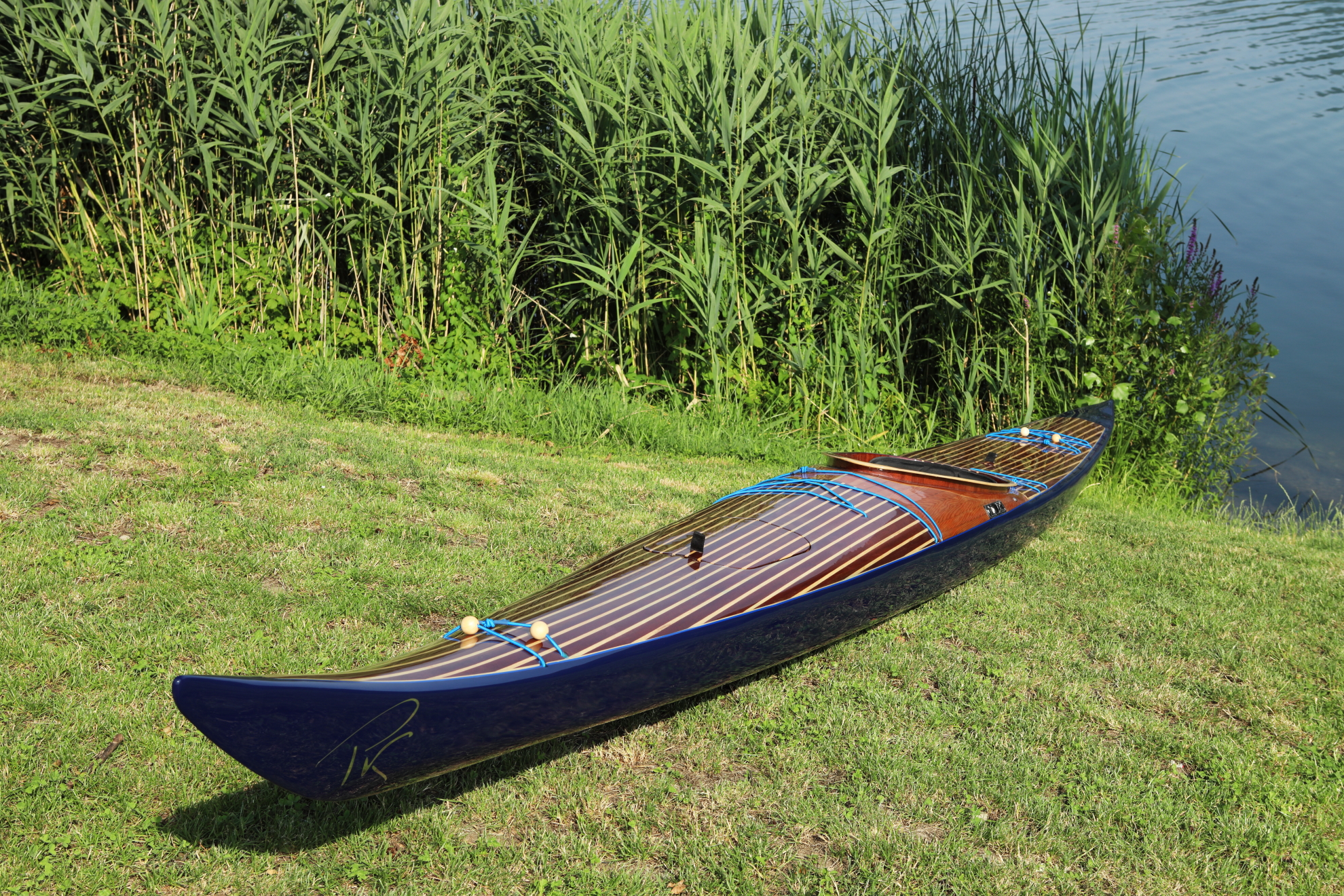
Night Heron
A fast, responsive sea kayak for open water and close to shore
The Night Heron line is an evolutionary branch of the Guillemots, but I took a look back at Greenland Inuit boats for some of my hull shaping inspiration. This boat brings the volume of the hull out towards the ends more for a higher prismatic coefficient. This gives it good efficiency at faster speeds. It has fairly hard chines with no concave sections. A slight lean will allow the boat to turn easily. The low back deck permits the paddler to easily lean back so their head touches the back deck. The foredeck is high enough that most paddlers will be able to get there legs in and out whiled sitting down. If you need more room for your legs you can look a the High Deck Night Heron.
This boat has been widely admired for its beauty, with an example accepted in the permanent collection at the Museum of Modern Art, but that does not detract from its on the water performance where it is fast and efficient and surfs very easily. It is a secure boat in rough water and responds well playing in the surge of rock gardens. Read Mike O’Brien’s review of the Night Heron in Small Boats Monthly.
At 20″ wide this is a narrow boat, however it is not scary to paddle. Even novice paddlers quickly get comfortable. The boat tracks well with good balance and is quite fast. It is very easy to roll and perform various braces.
For those wanting a super low-decked rolling machine suitable for all the lay-back style rolls I have drawn up a “Greenland Styled Deck” for the Night Heron.
The plans for this boat include the lines for the High Deck Night Heron as well.
see more at:
https://guillemot-kayaks.com/catalog/strip-built/sea-kayak-solo/night-heron
Petrel - Petrel play
A rough water play kayak
Early sailors thought the Storm Petrel could walk on water. Named after Saint Peter, petrels are small birds that feed at sea by fluttering just above the swell with their feet tip-toeing across the water. Like its bird namesake the Petrel kayak is at home at sea where it can dance among the waves.
Designed as a responsive, light-weight boat suitable for day trips in rough water it is equally at home poking into sheltered estuaries or exploring the shore of isolated coves. This design will carry a large paddler through rough conditions yet it is small enough to be easily handled by petite kayakers. With a form inspired by the Inuit inventors of kayaking, the Petrel will appeal to devoted Greenland-style paddlers without being intimidating to novice sea kayakers.
This boat is derived from my Night Heron designs, but it is shorter, has more rocker and more reserve buoyancy in the ends. The moderately hard chine of the strip Night Heron has been softened forward of the cockpit and transitions into a hard chine behind the cockpit. The result is a lively boat that accelerates quickly to catch waves, carves down wave faces and maneuvers easily.
The “transitioning” chine varies from a quite rounded, soft chine forward to a hard chine aft of the cockpit. The forward section provides smooth performance pushing out into waves and reduces the tendency to broach while surfing. The hard chine aft provides some shape that facilitates carving and leaned turns.
The deck shape takes its queue from Greenlandic Inuit skin-on-frame designs with a sharp chine-like feature line on either side. This provides height where you need it for knee room, while keeping the deck low over all. The side of the deck slopes in quickly so it is out of the way for close-to-the-hull strokes.
This design was developed to carry a 200 lbs, 6+ foot paddler on day trips, but it is small scale enough that it would also work well for substantially smaller paddlers.It is meant as a day tripping boat for larger paddlers, and would not have the capacity for extended trips, but if you are a smaller paddler there is enough interior volume to carry a fair amount of gear.
see more at:
https://guillemot-kayaks.com/catalog/strip-built/sea-kayak-solo-surfing/petrel
YUKON RACING SEA KAYAK
A sea kayak optimized for speed and efficiency
Sometimes you want a kayak that will click down the miles with minimum effort. Load it up with gear and head out to cover some distance. Or, maybe you just want to pass your friends in the next race, but really aren’t interested in a specialized racing kayak. The Yukon was initially designed for a customer who wanted to do the Yukon River Quest, a 400+ mile human powered race through the far north. On such a long race top end speed is not the most critical. Instead you need to stay comfortable over the long haul while moving as far as possible with the least amount of effort.
This design is optimized to be as efficient as possible while still being stable and comfortable. Where a longer, narrower boat such as the Mystery will be faster at a sprint, a shorter boat will have a lower the wetted surface area which is the source of much of the drag at a fast cruising pace. Like the Mystery I have put a lot of effort and analysis into developing a hull shape that is very low drag at a fast cruising pace.
In a long distance expedition your stroke efficiency will contribute significantly to your over all comfort and endurance. Stroke efficiency starts at the catch. The closer you can place your paddle to the centerline of the kayak, the easier, more relaxed, and more efficient your body mechanics will be and that will translate to power and endurance. The fore deck of the Yukon slopes quickly away allowing a close catch in your paddle stroke. With a wing paddle, this translates into the ability to generate a longer lateral motion allowing you to take the greatest advantage of your paddle.
A smooth, rounded bottom with a bit of rocker keeps the wetted surface area at a minimum yet due to its width has enough stability to be comfortable on rough water, flare above the waterline gives secondary stability if you need it. The rocker allows the design to turn easily and a suggested rudder will allow you to concentrate on a clean forward stroke without wasting energy on course correction.
There is plenty of volume to carry a good amount of gear but obviously too much weight will cause the kayak to bog down. The high fore deck lifts over waves and easily sheds any that make it up on top. There is a good amount of room for feet and the design can be comfortably paddled with feet together and knees up for an efficient leg drive. The back deck is low and will allow easy layback rolls if required.
see more at:
https://guillemot-kayaks.com/catalog/strip-built/sea-kayak-solo-racing/yukon-racing-sea-kayak


